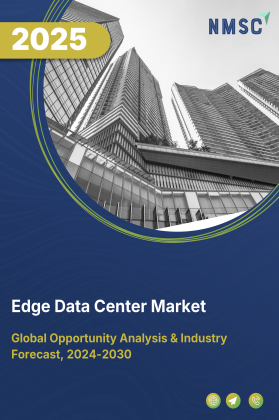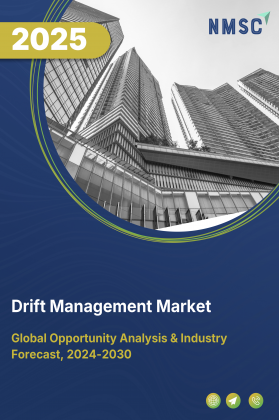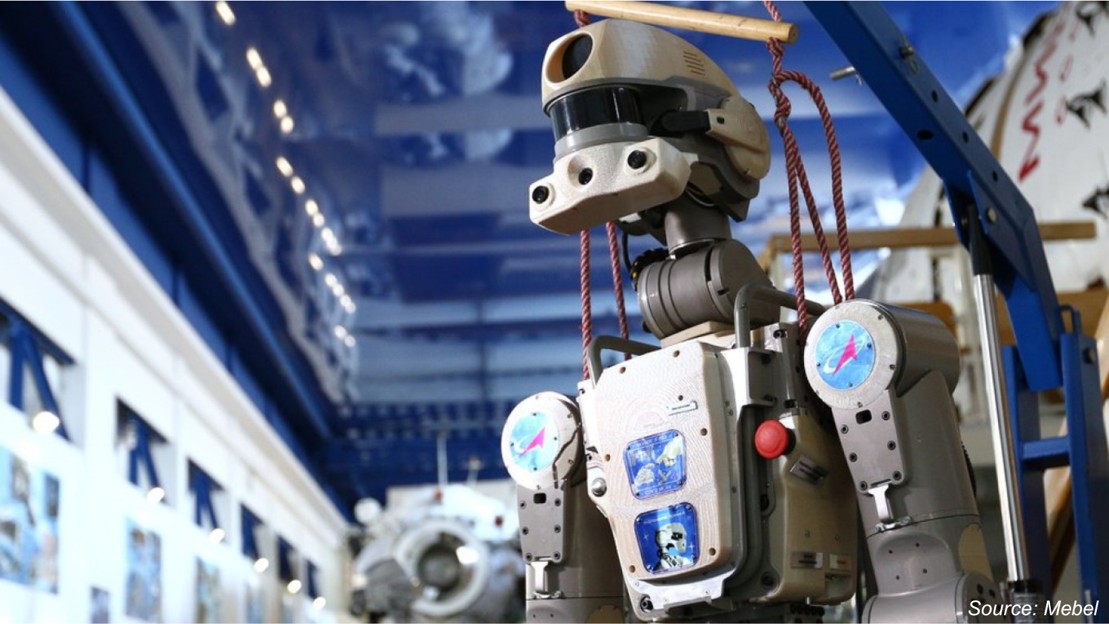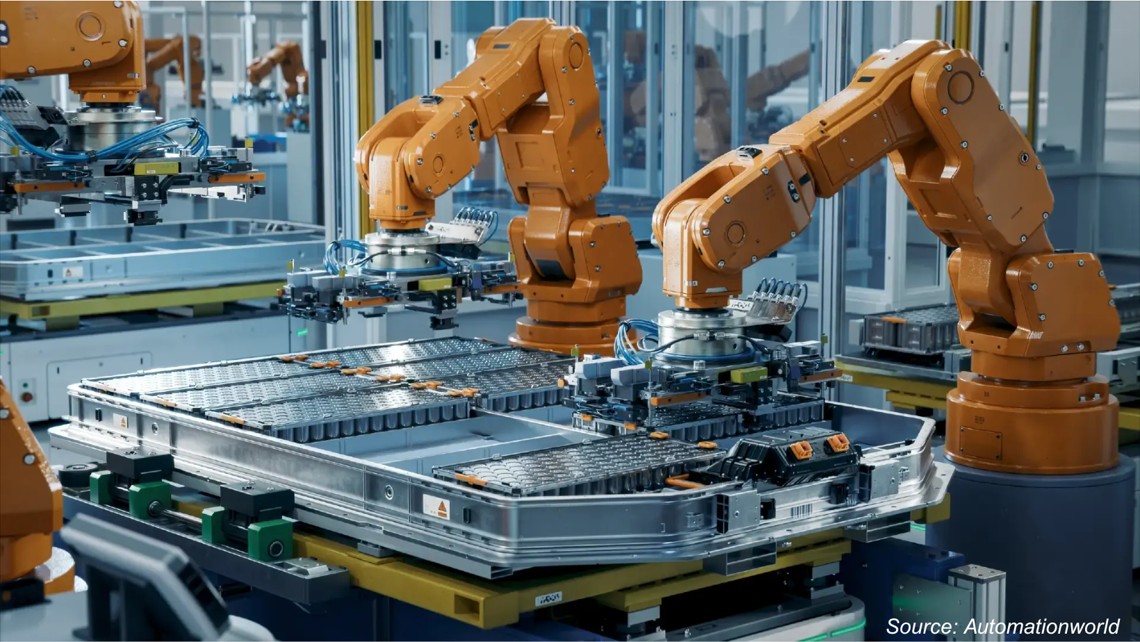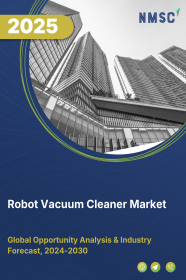
Robot Vacuum Cleaner Market by Type (Floor Vacuum Cleaner, Window Vacuum Cleaner, and Pool Vacuum Cleaner), by Operation Mode (Self-Drive, Remote Control, App-Controlled, and Hybrid), by Navigation Technology (3D Navigation, Vision-Based Navigation, Laser-Based Navigation, and Sensor-Based Navigation), by Suction Power (Medium Suction Power and High Suction Power) and Others – Global Opportunity Analysis and Industry Forecast, 2024–2030
Industry: ICT & Media | Publish Date: 01-Sep-2025 | No of Pages: 360 | No. of Tables: 658 | No. of Figures: 603 | Format: PDF | Report Code : IC897
Market Overview
The Robot Vacuum Cleaner Market size was valued at USD 8.47 billion in 2023, and is predicted to reach USD 28.75 billion by 2030, with a CAGR of 17.4% from 2024 to 2030. Robot vacuum cleaners, along with their floor, window, and pool counterparts, are advanced cleaning systems that cater to the evolving needs of today's consumers. These robotic cleaning solutions are designed to provide convenience and efficiency in maintaining different surfaces in both residential and commercial settings. Robot vacuum cleaners are innovative cleaning solutions that align with the contemporary need for automated and efficient cleaning across various surfaces.
Robot vacuum cleaners are smart and self-guided devices equipped with sensors, brushes, and suction capabilities. They autonomously navigate indoor spaces, such as homes, offices, or retail areas, to remove dust, dirt, and debris from floors. These robots offer a modern solution to time-consuming floor cleaning tasks, making them particularly appealing to individuals and businesses looking for a more effortless way to maintain cleanliness. They represent a shift towards modern convenience, allowing consumers to spend less time on demanding cleaning chores and more time enjoying their spaces.
Rising Urbanization Coupled with Smart Home Integration Drive the Growth of The Market
The rising trend of urbanization and the increasing integration of smart home technology are fueling the expansion of the market. Robot vacuum cleaners, featuring advanced navigation capabilities, meet this demand by autonomously cleaning surfaces and free up time for busy urban residents. Moreover, their seamless integration into smart homes, allowing remote control via smartphones and voice-activated assistants, aligns perfectly with the broader home automation trend. This combination of urbanization and smart home integration is reshaping the cleaning appliance market and redefining convenience and efficiency in household chores. This, in turn, promises a future where technology enhances daily lives seamlessly.
Rising Disposable Income Across the Globe Increases the Adoption of Robot Vacuum Cleaners
The adoption of robot vacuum cleaners is on the rise globally, and a significant driving force behind this trend is the steady increase in disposable income worldwide. This surge in adoption is linked to the growing desire for convenience and automation in households. As people's incomes grow, they are more willing to invest in smart technologies that simplify their lives. Once considered a luxury, robot vacuum cleaners have become more affordable and accessible, making them an appealing addition to modern homes. These devices save time and effort by autonomously cleaning floors, windows, or pools. Also, robot vacuum cleaners align with the trend of smart home integration, enabling users to control them remotely using smartphones and voice commands.
Moreover, with heightened awareness of health and hygiene and the consideration of long-term cost savings and environmental factors, robot vacuum cleaners are a practical and attractive choice for consumers with increasing disposable incomes. As the adoption of automation is expected to rise, the demand for these cleaning robots will increase. The increased allocation of budgets for automation technologies, including smart home devices and appliances, reflects consumers' growing preference for convenience and efficiency. This shift is poised further to drive the growth of the robot vacuum cleaner market.
High Cost and Limited Cleaning Ability Restrain the Market Growth
The relatively high initial investment required to purchase robot vacuum cleaners is a significant deterrent for many potential consumers. Furthermore, despite advancements in their technology, robot vacuum cleaners still have limitations regarding their cleaning efficacy. While they excel at routine maintenance cleaning tasks, they may not entirely replace traditional vacuum cleaners for more thorough and intensive cleaning requirements.
The Integration of Artificial Intelligence (AI) Into Robot Vacuum Cleaners Presents Significant Opportunities
The integration of artificial intelligence (AI) technology into robot vacuum cleaners provides exceptional intelligence and capabilities to these automated devices. They can learn and adapt to the layout of a home, identify and navigate around obstacles in real time, and formulate efficient cleaning routes. Through continuous learning, robot vacuum cleaners can become attuned to user preferences and even anticipate when cleaning is desired, ensuring consistent home cleanliness.
Moreover, these AI-driven robots seamlessly interface with other smart home devices, enabling effortless control and coordination. Additionally, they can recognize various flooring surfaces and adjust their cleaning methods for enhanced performance. The integration of AI-powered sensors allows them to monitor indoor air quality, rendering them particularly valuable for individuals with allergies. As these robot cleaners receive regular updates, they promise cleaner floors and a more intelligent and interconnected home experience overall.
North America Dominates the Robot Vacuum Cleaner Market
The growth of the North American robot vacuum cleaner market is primarily driven by increasing disposable incomes. With greater purchasing power, American households are more inclined to invest in premium home technologies and automation solutions, including robot vacuum cleaners. According to data from the U.S. Bureau of Labor Statistics (BLS), disposable income levels in the U.S. witnessed a notable increase in 2022, with the average annual expenditures for all consumers reaching USD 72,967, marking a substantial 9.0% rise from the previous year. As disposable income rises, the demand for robot vacuum cleaners is expected to grow further, solidifying their position as integral components of modern American households.
Furthermore, the presence of industry giants such as iRobot Corporation and SharkNinja Operating LLC plays a pivotal role in expanding the robot vacuum cleaner market in this region. These market leaders are renowned for their innovation, reliability, and diverse product offerings. For instance, in September 2022, iRobot introduced the world's most advanced 2-in-1 robot vacuum that combines the convenience of a robot vacuum with the effectiveness of a mop, offering a comprehensive cleaning experience. The iRobot OS 5.0 updates enhance the device's intelligence, allowing it to navigate and clean homes with even greater precision. With improved features and capabilities, iRobot continues to lead in the development of cutting-edge home cleaning solutions.
Asia-Pacific Is Expected to Show Steady Growth in The Robot Vacuum Cleaner Market
Asia-Pacific encompasses various countries, including China, Japan, India, South Korea, Australia, Indonesia, Singapore, Taiwan, Thailand, and the rest of the region. The increasing adoption of Internet of Things (IoT) technology across these regions drives the demand for household service robots, particularly robot vacuum cleaners. China boasts robust IoT penetration, with an astounding 1.8 billion IoT connections recorded as of December 2022. These IoT connections seamlessly integrate robot vacuum cleaners into smart home ecosystems, offering advanced functionality and convenience to Chinese consumers. As IoT technology advances and becomes more widespread in China, it is expected to accelerate the expansion of the robot vacuum cleaner market. This will solidify the status of robot vacuum cleaners as indispensable components of modern smart homes in the Chinese market.
Moreover, the presence of key market players operating in this region is further bolstering the growth of the robot vacuum cleaner market. For instance, in March 2023, Samsung introduced its premium range of robotic vacuum cleaners, including the Bespoke Jet and Robotic Jet Bot+. The Bespoke Jet series has a dock that charges the vacuum cleaner and automatically empties the dustbin, featuring a Digital Inverter Motor with a 210W suction capacity. Samsung's Jet Bot+ relies on Light Detection and Ranging (LiDAR) sensors for navigation, and can be controlled remotely through the SmartThings app. Users can customize virtual no-go zones, track cleaning progress in real time, and even employ voice commands via Bixby, Alexa, or Google Home.
Competitive Landscape
Several market players operating in the robot vacuum cleaner market include iRobot Corporation, Pentair PLC, Roborock, Ecovacs Robotics, Xiaomi Corporation, Maytronics Ltd., Samsung Electronics Co., Ltd., SharkNinja Operating LLC, Panasonic Corporation, Dyson Ltd., BISSELL Inc, iLife Robot, Proscenic, Eufy, Cecotec Innovaciones S.L. These market players are adopting product launch strategies across various regions to maintain their dominance in the robot vacuum cleaner market.
For instance, in March 2022, iRobot launched its Genius 4.0 Home Intelligence, doubling the intelligence of Roomba i3 and i3 Robot Vacuums and introducing new features to enhance their performance. The update represents a significant advancement in smart home cleaning technology, offering users greater control and automation for a cleaner living environment.
Moreover, in May 2023, Dyson introduced its latest robot vacuum cleaner, the Dyson 360 Vis-Nav. It is equipped with advanced navigation capabilities and promising efficient cleaning performance. This new addition to Dyson's lineup showcases its ongoing commitment to innovative home cleaning solutions in the evolving market.
Key Market Segments
By Type
-
Floor Vacuum Cleaner
-
Robot Vacuum with Mopping
-
Robot Vacuum without Mopping
-
-
Window Vacuum Cleaner
-
Pool Vacuum Cleaner
By Operation Mode
-
Self-Drive
-
Remote Control
-
App-Controlled
-
Hybrid (Combining autonomous and manual control)
By Navigation Technology
-
3D Navigation
-
Vision-Based Navigation
-
Laser-Based Navigation
-
Sensor-Based Navigation
By Suction Power
-
Medium Suction Power (Standard cleaning performance)
-
High Suction Power (Heavy-duty cleaning)
By Filtration System
-
Standard Filtration
-
High-Efficiency Particulate Air (HEPA) Filtration
By Distribution Channel
-
Online Retailers
-
Offline Retailers
By Region
-
North America
-
The U.S.
-
Canada
-
Mexico
-
-
Europe
-
The U.K.
-
Germany
-
France
-
Italy
-
Spain
-
Denmark
-
Netherlands
-
Finland
-
Sweden
-
Norway
-
Russia
-
Rest of Europe
-
-
Asia-Pacific
-
China
-
Japan
-
India
-
South Korea
-
Australia
-
Indonesia
-
Singapore
-
Taiwan
-
Thailand
-
Rest of Asia-Pacific
-
-
Rest of the World (RoW)
-
Latin America
-
Middle East
-
Africa
-
Key Players
-
iRobot Corporation
-
Pentair PLC
-
Roborock
-
Ecovacs Robotics
-
Xiaomi Corporation
-
Maytronics Ltd.
-
Samsung Electronics Co., Ltd.
-
SharkNinja Operating LLC
-
Panasonic Corporation
-
Dyson Ltd.
-
BISSELL Inc
-
iLife Robot
-
Proscenic
-
Eufy
-
Cecotec Innovaciones S.L.
REPORT SCOPE AND SEGMENTATION:
|
Parameters |
Details |
|
Market Size in 2023 |
USD 8.47 Billion |
|
Revenue Forecast in 2030 |
USD 28.75 Billion |
|
Growth Rate |
CAGR of 17.4% from 2024 to 2030 |
|
Analysis Period |
2023–2030 |
|
Base Year Considered |
2023 |
|
Forecast Period |
2024–2030 |
|
Market Size Estimation |
Billion (USD) |
|
Growth Factors |
Rising urbanization coupled with smart home integration Rising disposable income across the globe |
|
Countries Covered |
26 |
|
Companies Profiled |
15 |
|
Market Share |
Available for 10 companies |
|
Customization Scope |
Free customization (equivalent up to 80 working hours of analysts) after purchase. Addition or alteration to country, regional, and segment scope. |
|
Pricing and Purchase Options |
Avail customized purchase options to meet your exact research needs. |




















 Speak to Our Analyst
Speak to Our Analyst




